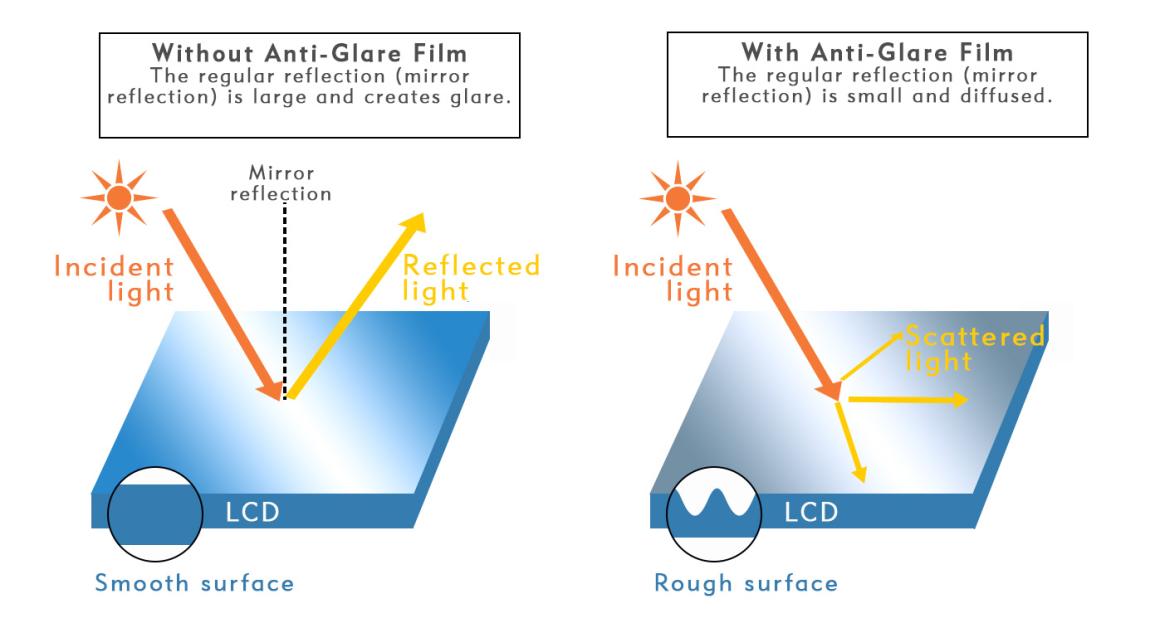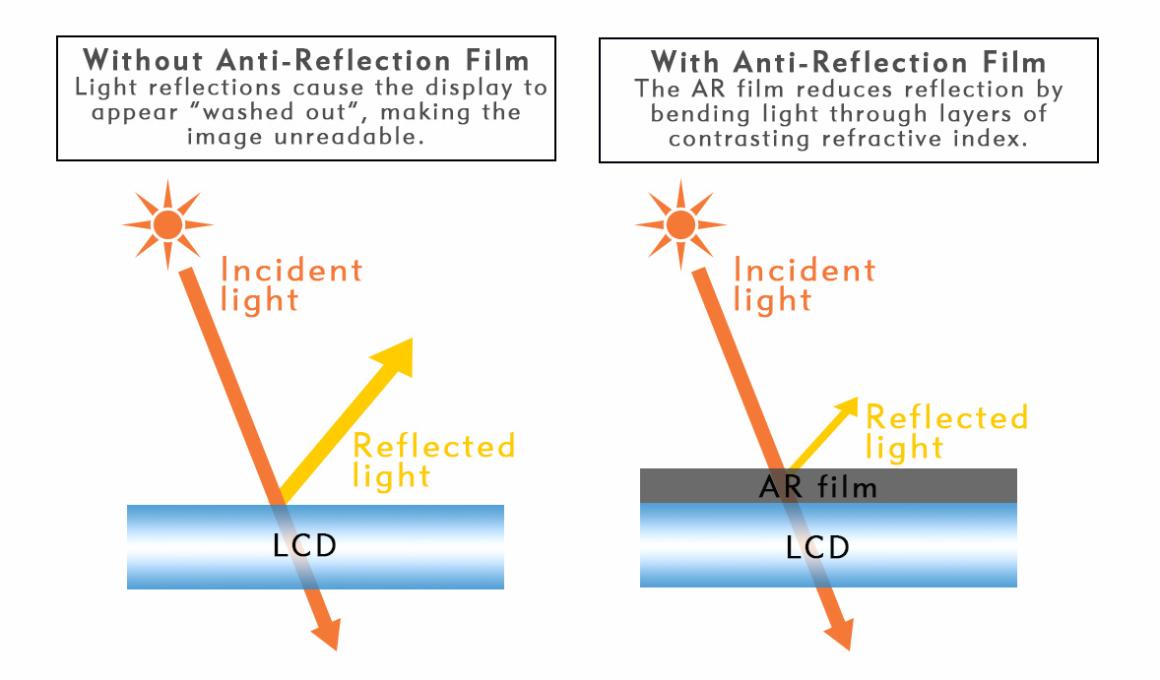Anti-Glare (AG) and Anti-Reflective (AR) coatings are often confused with each other. They seem to do similar tasks, but what really is the difference between the two coatings and when should you apply each?
Improving the readability of your display
Both AG and AR coatings improve readability of your display in sunlight conditions or environments with high ambient light - including home appliances or marine displays - but there are differences, advantages and disadvantages of each method.
Let's explore them here.

What is Anti-Glare?
Think of Anti Glare as dealing with sources of external light – the aforementioned sunlight or high ambient light which impair the readability of the image a display is trying to show. Anti-glare works by roughening the surface of the display, turning specular reflection into diffuse reflection, by either etching the overlay with a solvent or other chemical, or dip coating the overlay with a solution which on drying will leave a roughened surface. This roughened overlay changes the ratio of mirror-like reflection from the surface of the display.

Benefits of Anti-Glare:
- Low cost solution
- Improves readability in outdoor environments
Negatives of using Anti-Glare:
- Not a perfect solution - the diffusion method scatters light rays, which can produce around 8% reflection output.
- This can reduce clarity and resolution of the intended image
- Due to the roughness of the surface, anti-fingerprint film is generally also needed to combat fingerprint marks
What is Anti-Reflective?
Unlike diffusion-based AG solutions, Anti-Reflection takes into account external and internal sources that may reduce the light transmitted through the display window, thereby reducing the readability of the viewed image. As light passes from one medium to another, the difference between the “refractive index” in the adjacent surfaces creates transitional phase differences, which increase the amount of light reflected. These reflections are cumulative and cause the display to appear “washed out”, making the image unreadable.
Rather than increasing the light output and increasing power consumption, an AR coating can be used which consists of transparent, thin film structures with alternating layers of contrasting refractive index, which results in destructive interference in the light reflected from the interfaces, and constructive interference in the corresponding transmitted light through the surface.

Benefits of Anti-Reflective:
- Anti-reflective films reduce reflection by bending light through objects. It is capable of reducing reflection down to 0.4% at certain wavelength and incident angle, much lower than anti-glare
- Display readability is comprehensively enhanced
Negatives of using an Anti-Reflective:
- More expensive than anti-glare. Another method to consider is optical bonding, which is more expensive again but offers superior readability and reduced reflections further.
As with all display requirements, it very much depends on the environment in which you are using your display, together with the end user requirements. If you are embarking on a new project, or have have challenges with your current display readability, contact us and we will be happy to advise the best solution.


